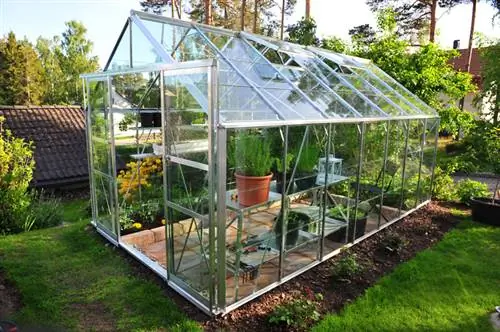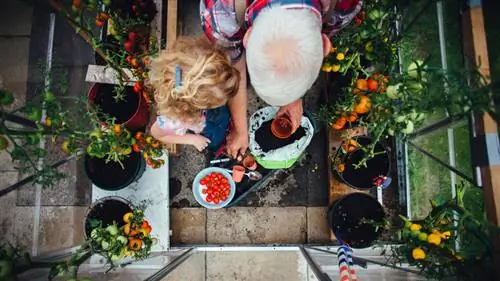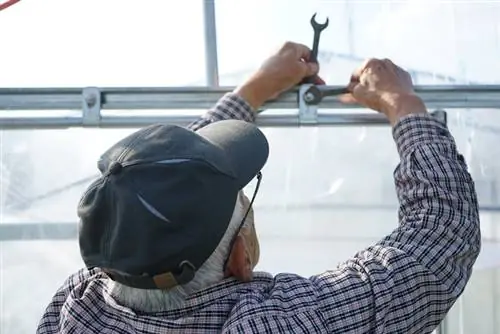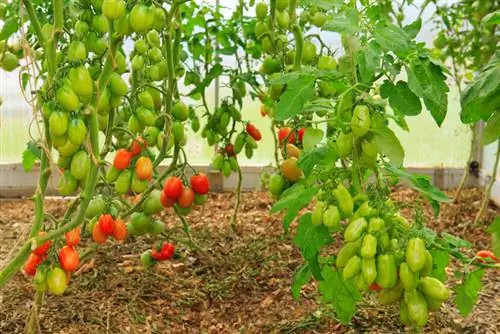- Author admin [email protected].
- Public 2023-12-16 16:46.
- Last modified 2025-06-01 06:02.
Every structure must be stable and secure, which is why the following applies to the home garden: Careful anchoring of the greenhouse is mandatory. This does not require in-depth specialist knowledge, but some structural peculiarities and general static laws must be adhered to.
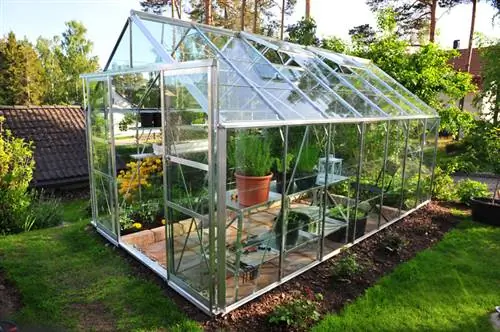
What methods are there to anchor a greenhouse?
To anchor a greenhouse, you can either pour a closed concrete foundation slab, build a strip foundation for the side walls, or install a point foundation below the supports. Prefabricated kits often come with fastening kits including anchors and steel cables.
Whether you purchased it as a prefabricated kit or built it yourself piece by piece, you should anchor the new greenhouse with particular care. After all, every morning it has to be in exactly the same place where it was left the night before. With theclassic foundation made of concrete,the highest stability is achieved and it can also be built quite easily and inexpensively on your own. Prefabricated houses often come with a special fastening kit included, which consists of pillars and eyelets that can be embedded in the ground and which can be anchored to the greenhouse using steel cables.
Foundations - easily made yourself
Basically, most hobby gardeners choose one of thethree following options for anchoring the greenhouse, all of which offer a high level of security. A distinction is made between:
- Closed foundation slab made of poured concrete;
- Strip foundation for the side walls;
- Point foundation below the beams;
It should be noted that, depending on the size of the new greenhouse building, a building permit may even be required in some federal states. The optimal and usuallyfinal location selection is also important to consider, as later corrections are hardly possible without a lot of effort. If you intend to use the greenhouse all year round and heat it additionally if necessary, the closed foundation plate is the optimal solution.
Anchor the greenhouse, ideally frost-proof
This means that the depth of the excavation pit should be between 60 and 80 cm, which, in addition to the desiredstability, later also enables the plants to beoptimal climatic conditionsand heating energy is only required in very moderate amounts. We recommend using ready-made concrete (€14.00 on Amazon), which is available as dry mortar in all major hardware stores. Mixed with water, the concrete only needs to be filled into the prepared excavation pit and, as can be seen from the manufacturer's documentation, left to harden for a few days. The concrete layer should be at least 20 cm thick. As a base, the excavated foundation can also befilled with gravel before cementing The anchors necessary for proper statics are included in the foundation, with which the greenhouse frame is secured until it dries out.
Anchoring prefabricated sets to the greenhouse
Basically, these kits work in a similar way to a point foundation, with the exception that the anchors are embedded in the ground a little outside the outer walls. To connect to the greenhouse,several steel cables are laid over the roof, which are firmly adjusted on the opposite side. There are also manual tensioning devices that are intended to ensure that the metal cables fit as tightly as possible to the outer shell of the greenhouse. Purely in terms of aesthetics, the previously described concrete foundation would certainly be more attractive.
Tip
So that everything fits later when anchoring the greenhouse, this comparatively small foundation should also be precisely staked out with a batter board. The absolute ground level and squareness not only looks good afterwards, but also increases stability and safety.

